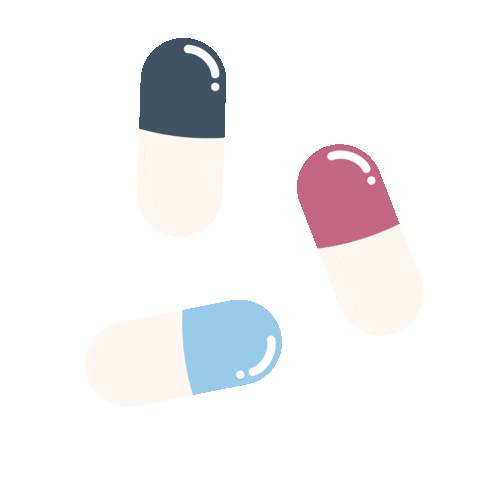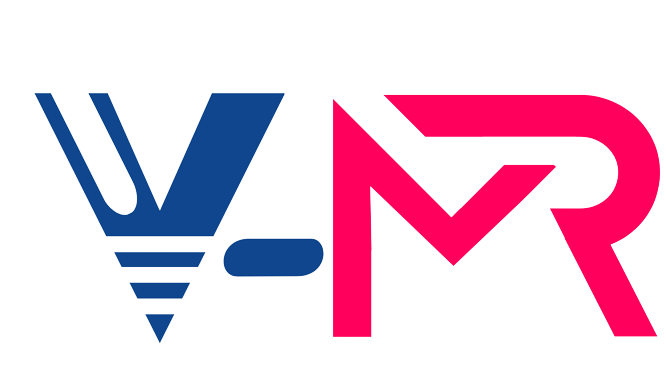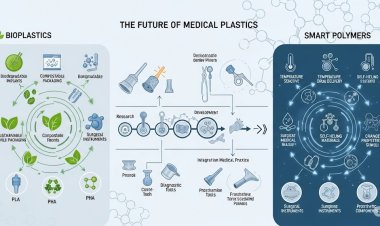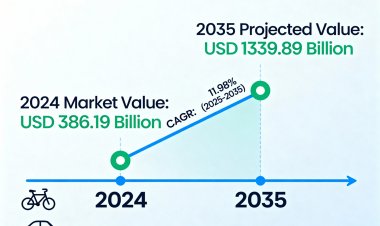The Future of Diabetes Treatment: Insights into the Global Diabetes Drugs Market
In 2023, The Global Diabetes Drugs Market Reached A Value of US$ 78.60 Billion, And Is Projected to Reach US$ 84.65 Billion In 2024. The Market Is Projected to Reach US$ 177.74 Billion By 2034, Representing A 7.7% Revenue Increase Over the Forecast Period (2025-2034).

- The Diabetes Drugs Market Report provides an overview of the current state of the market, including key trends, market size, and competitive landscape.
- The diabetes drugs market share study encompasses 20 countries. The research includes a country-by-country analysis of market value projections for each country.
- Over 1,500 product literature, industry release, annual report, and other documents from leading diabetes drug industry participants, along with authentic industry journals, trade associations' releases, and government websites, have been reviewed to generate high-value industry insights.
- The study combined quality data, professional opinions, analysis, and critical perspectives to give a balanced view of global markets, helping stakeholders make informed decisions.
Market Introduction and Definition
The global market for pharmaceutical products designed to treat and manage diabetes, a chronic metabolic disorder that affects millions of people worldwide, is referred to as the Diabetes Drugs Market. Diabetes is characterized by high blood sugar levels due to the body's inability to produce or properly utilize insulin, a hormone that regulates blood sugar. The market for diabetes drugs encompasses various medications, including insulin, oral hypoglycemic agents, and other injectable drugs that help to control blood sugar levels and prevent complications associated with the condition. The growing prevalence of diabetes, combined with advances in drug development, is driving demand for these medications.
Diabetes is broadly categorized into two types: Type 1 diabetes, where the body fails to produce insulin, and Type 2 diabetes, where the body becomes resistant to insulin. The management of Type 1 diabetes generally requires insulin therapy, whereas Type 2 diabetes is often managed through oral medications and lifestyle modifications. The ongoing innovation in diabetes drug therapies aims to improve patient outcomes by offering better efficacy, fewer side effects, and more convenient administration routes.
The main categories of drugs used in the treatment of diabetes include insulin analogues, sulfonylureas, biguanides (such as metformin), DPP-4 inhibitors, GLP-1 receptor agonists, and SGLT-2 inhibitors. The diabetes drugs market is experiencing a period of significant growth, driven by an increase in the number of people being diagnosed with diabetes due to changing lifestyles, an aging population, and rising obesity rates. Furthermore, an increased focus on early detection, improved access to healthcare, and the adoption of modern therapies are driving market growth.
The market landscape is also shaped by ongoing research and development efforts to improve outcomes for patients with diabetes, particularly with the emergence of new drug classes and combination therapies. Additionally, the market is gaining from the growing availability of biosimilars and generics, which enhance cost-effectiveness and facilitate improved drug accessibility.
Request Sample Report of Diabetes Drugs Market @ https://www.vantagemarketresearch.com/diabetes-drugs-market-3023/request-sample
Key Takeaways
- The global diabetes drugs market is experiencing a period of significant growth, driven by three key factors: increasing prevalence of diabetes, technological advancements, and a growing aging population.
- The market for Type 2 diabetes treatments is dominated by insulin and oral hypoglycemic agents, which are the most commonly used drugs in this area.
- Newer therapies, such as SGLT-2 inhibitors and GLP-1 receptor agonists, are gaining popularity due to their efficacy in managing both blood glucose levels and cardiovascular risk.
- Emerging markets are contributing to the overall growth, driven by rising diabetes rates and improved healthcare infrastructure.
Market Dynamics
The diabetes drugs market is driven primarily by the rising prevalence of diabetes worldwide. Factors such as aging populations, sedentary lifestyles, and rising obesity rates contribute to the growing number of diabetes cases. Additionally, advancements in drug formulations and delivery systems have improved the efficacy and convenience of diabetes medications, further driving market growth. The rising awareness about diabetes management and the importance of early diagnosis and treatment also play a crucial role in market expansion.
Despite promising growth prospects, the diabetes drugs market is confronted with a number of challenges. The high cost of diabetes medications, particularly insulin, represents a significant obstacle to access for many patients, particularly in low- and middle-income countries. Additionally, stringent regulatory requirements and the lengthy approval process for new drugs can impede market growth. Furthermore, the side effects associated with some diabetes medications may limit their adoption.
The diabetes drugs market presents a number of opportunities for growth. The development of personalized medicine, which tailors treatment plans to individual patient needs, is gaining traction. Additionally, the increasing adoption of digital health technologies, such as continuous glucose monitoring systems and mobile health applications, is enhancing diabetes management and patient outcomes. The growing focus on preventive measures and early intervention is also expected to drive market growth.
There has been a notable increase in the prevalence of diabetes.
The prevalence of diabetes is on the rise globally, driven by a number of factors, including an aging population, sedentary lifestyles, and rising obesity rates. The International Diabetes Federation (IDF) reports that approximately 537 million adults (aged 20-79) were living with diabetes in 2021. This figure is expected to rise to 643 million by 2030. In the United States, the prevalence of diabetes is increasing across all age groups, driven by poor diet, lack of physical activity, and obesity.
The rise in diabetes cases has significant implications for public health and healthcare systems worldwide. Diabetes is associated with numerous complications, including cardiovascular diseases, kidney failure, and neuropathy, which can lead to increased morbidity and mortality. The economic burden of diabetes is also substantial, with direct medical costs and indirect costs related to lost productivity and disability.
To address the rising prevalence of diabetes, public health campaigns are being implemented to promote healthy lifestyles, early diagnosis, and effective management of the condition. Healthcare providers are focusing on patient education and self-management to improve outcomes and reduce the risk of complications. The development of new and innovative diabetes medications is also a crucial aspect of addressing the growing burden of diabetes.

Buy Now Our Diabetes Drugs Industry Report @ https://www.vantagemarketresearch.com/buy-now/diabetes-drugs-market-3023/0
Market Segmentation
The market is segmented into four categories: insulin, oral anti-diabetic drugs, non-insulin injectable drugs, and combination drugs. The insulin segment remains the largest, driven by the increasing number of insulin-dependent diabetes patients. Oral anti-diabetic drugs, including metformin and sulfonylureas, are widely used for Type 2 diabetes management. Non-insulin injectable drugs, such as GLP-1 receptor agonists, are gaining popularity due to their efficacy in controlling blood glucose levels.
By Drug Class:
- Insulin
- GLP-1 Receptor Agonists
- SGLT-2 Inhibitors
- DPP-4 Inhibitors
- Biguanides (Metformin)
- Others (Thiazolidinediones, Meglitinides)
By Diabetes Type:
- Type 1 Diabetes
- Type 2 Diabetes
- Gestational Diabetes
By Route of Administration:
- Oral
- Injectable
- Subcutaneous
- Intravenous
The market is segmented into four main categories: hospital pharmacies, retail pharmacies, online pharmacies, and others. Hospital pharmacies represent a significant portion of the market, as they serve as the primary point of care for diabetes patients. Retail pharmacies and online pharmacies are also important distribution channels, providing convenient access to diabetes medications.
By Distribution Channel:
- Hospital Pharmacies
- Retail Pharmacies
- Online Pharmacies
- Specialty Clinics
Regional:
The diabetes drugs market is divided into the following regions: North America, Europe, Asia-Pacific, Latin America, and the Middle East & Africa. It is anticipated that North America will generate the highest revenue, with the U.S. market projected to reach USD 37.8 billion by 2024. Europe boasts a considerable market share, largely due to the high prevalence of diabetes and its advanced healthcare infrastructure. The Asia-Pacific region is experiencing rapid growth, driven by an increase in the number of diagnosed cases of diabetes and improvements in healthcare access. Emerging markets in Latin America and the Middle East and Africa are witnessing a rise in awareness and adoption of diabetes treatments.
Regional/Country Market Outlook
- North America: The global market leader, with a high percentage of diabetic patients, primarily in the U.S. A strong focus on research and development, along with high drug adoption rates.
- Europe: A significant market share due to high prevalence and advanced healthcare infrastructure.
- Asia-Pacific: Rapid growth driven by increasing diabetes cases and improving healthcare access.
- Latin America and the Middle East & Africa: Emerging markets with growing awareness and adoption of diabetes treatments.
Industry Trends
There is an increased focus on the development of personalized treatment plans for patients with diabetes.
The following trends are expected to have a significant impact on the diabetes management market:
- The adoption of telemedicine and digital health technologies for diabetes management is on the rise.
- Combination therapies are becoming more popular for efficient blood sugar control.
- There is a growing shift towards biologics and biosimilars, especially in insulin treatments.
- The demand for GLP-1 receptor agonists and SGLT-2 inhibitors is on the rise due to their benefits beyond blood glucose control, such as weight loss and cardiovascular protection.
- Pharmaceutical companies are investing in emerging markets as diabetes rates continue to rise.
Competitive Landscape
The diabetes drugs market is highly competitive, with key players including Novo Nordisk, Sanofi, Eli Lilly, Merck & Co., and AstraZeneca. These companies are pursuing a strategy of strategic collaborations, product launches, and research and development to maintain their market positions.
Novo Nordisk is a market-leading pharmaceutical company specialising in diabetes drugs. The company is renowned for its innovative insulin products and GLP-1 receptor agonists. Its robust pipeline of diabetes medications demonstrates a commitment to addressing unmet needs in diabetes care.
Sanofi is a significant competitor in the diabetes drugs market, offering a diverse range of insulin products and oral anti-diabetic drugs. The company is committed to expanding its product portfolio and improving patient outcomes through innovative therapies and strategic partnerships.
Eli Lilly is a leading pharmaceutical company in the diabetes drugs market, renowned for its insulin products and GLP-1 receptor agonists. The company is dedicated to advancing diabetes care through research and development, and has recently expanded its diabetes portfolio with the acquisition of a biotech company specializing in innovative diabetes treatments.
Merck & Co. is a leading pharmaceutical company in the diabetes drugs market, with a strong presence in the oral anti-diabetic drugs segment. The company is committed to developing new therapies and improving patient outcomes through innovative research and strategic collaborations.
AstraZeneca is a leading player in the diabetes drugs market, known for its SGLT2 inhibitors and combination therapies. The company is actively engaged in research and development to address the growing burden of diabetes and improve patient outcomes.
Track market trends LIVE & outsmart rivals with our Premium Data Intel Tool: Vantage Point
Recent Key Strategies and Developments
- Novo Nordisk has launched a new GLP-1 receptor agonist for type 2 diabetes.
- Sanofi has entered into a strategic partnership to develop next-generation insulin therapies.
- Eli Lilly has expanded its diabetes portfolio with the acquisition of a biotech company specializing in innovative diabetes treatments.
Key Benefits for Stakeholders
- Healthcare Providers: Access to a wide range of treatment options to tailor patient care.
- Patients: Improved glycemic control and quality of life through advanced medications.
- Pharmaceutical Companies: Opportunities for growth through innovation and market expansion.
- Investors: Attractive investment opportunities in a growing market.
Please refer to our latest press release, which provides an in-depth analysis of the Diabetes Drugs Market.
The diabetes drugs market is positioned for substantial growth, driven by the rising prevalence of diabetes and ongoing advancements in drug development. Stakeholders across the healthcare spectrum can leverage the evolving landscape of diabetes treatment to their advantage.


















